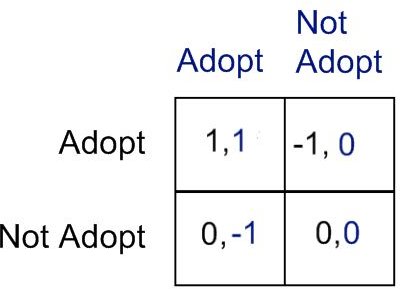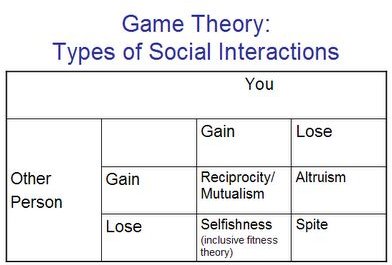What is Game Theory and Collaboration?
Obtain the Best Results by Choosing the Worst Options
In game theory the term “zero-sum game” occurs when one team wins and one team loses. Plus (+) and minus (-) equal zero. Sports are examples of zero-sum games. However, game theory also shows that an organization can simultaneously strengthen its long-term position by worsening its own short-term options; normally that would not happen in a sporting event. However, football coaches have rested their top players late in the football season, once they have confirmed their team’s playoff spot. In such a case, the coach may be content to lose a game now; but, by resting the star players, improve the outcome of a playoff game later.
This theory, to advance your position using uncertainty, can be seen in other forms. The capability to retaliate an attack can provide more options than the ability to resist an attack. Uncertain retaliation is more credible and more efficient (leaves the opponent guessing) than certain retaliation (where the opponent knows what you will do).
Collaboration in these situations is about presenting not your best options, but to keep the others guessing. It can force opponents to look at your possible behavior and force them to adjust their own actions.
Image Source: www.brrrptzzapthesubject.com
See Also: Game Theory and Project Management
Collaboration even when you don’t want it
During World War I, the trench warfare method developed. In it, the opposing sides launched attacks across no-man’s land in hopes of smashing through the lines and overwhelming the opponent. It was a miserable failure and cost thousands of lives.
Later they determined that other acts of war only made matters worse for each side. They could attack and destroy the other side’s food supply, but that would invite retaliation, so both sides would be left hungry. They could kill the medics that were trying to retrieve the wounded lying in no-man’s land, but that would cause the other side to do likewise; both sides’ injured would not be recovered, and a new set of injured would be in that territory. So, from this, a certain collaboration took place. Both sides realized that there were combat operations that they could not or would not do, or it would make their situation worse. So, they were collaborating even if they didn’t want to. This is an example of an infinite game. It shows that within certain behavior forms, other embedded behavior forms exist, and they, in turn, dictate the main type of behavior that will take place.

The image shows what happens in infinite theory. If both adopt a mutual behavior, they both gain. If one adopts and the other does nothing, one gains and the other loses. If both do nothing they neither gain nor lose.
Image: MindYourDecisions
Summary
Game theory shows that collaboration can come in a variety of formats. From a coach collaborating with an opposing team in order to lose a game, which in turn will increase their playoff chances, to acknowledging that the opponent can cause you as much damage as you can to them, so you implicitly collaborate not to make matters worse. In these cases, different short-term behaviors are predictable based on long-term goals and expected outcomes.
